#FashionRevolution
Text
Mondays' Photography Inspiration - Deborah Turbeville
Deborah Turbeville was a trailblazing American photographer whose innovative work left an indelible mark on the world of fashion and fine art photography. Born on July 6, 1932, in Boston, Massachusetts, Turbeville’s career spanned several decades and was characterised by her unique vision and a departure from traditional photographic norms.
Deborah Turbeville’s early life was marked by a…

View On WordPress
#ArtisticVision#BathhouseSeries#CinematicCapture#DeborahTurbevilleLegacy#EtherealBeauty#FashionEditor#FashionInnovation#FashionPhotography#FashionRevolution#HauteCouture#IconicPhotography#NarrativePhotography#PhotographyHeritage#PhotographyInfluence#PhotographyLegend#PhotographyPioneer#PhotographyTrailblazer#VintageVogue#VisualStorytelling#Deborah Turbeville#Deborah Turbeville photography#inspiration#inspirational photographers#Monday inspirations#Photography
18 notes
·
View notes
Text
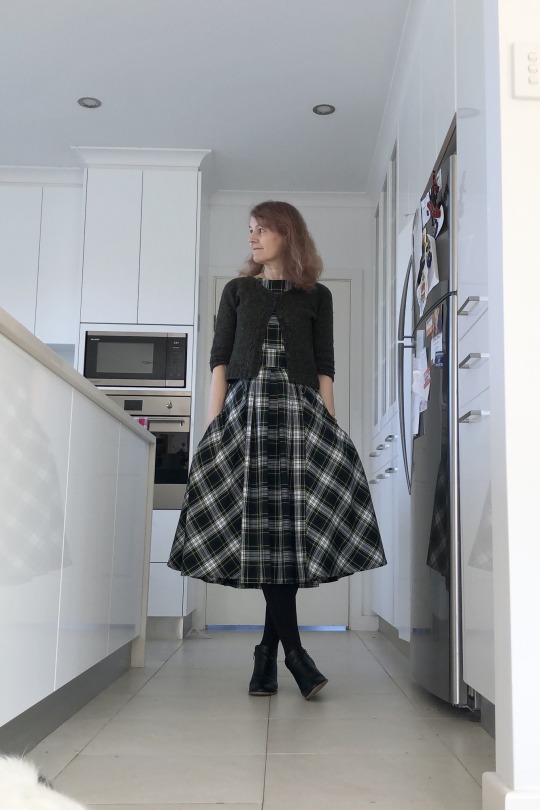
4th September 2023
dress, cardigan, tights, socks
mt, sewing
13-18C, mostly sunny
#ootd#sewing#imakemyownclothes#maker#makersmovement#sewing revolution#fashionrevolution#ootn#sewsolidarity#makersofinstagram
21 notes
·
View notes
Text

SHOP: gettothecorner.com
#Streetwear#Hypebeast#Sneakerhead#FashionIcons#UrbanStyle#StreetFashion#StreetStyle#StreetArt#HighFashion#VintageFashion#Skateboarding#GraffitiArt#HypeFashion#StreetwearCulture#FashionRevolution#SneakerCulture#StreetwearInspiration#CoolKidsClothing#AlternativeFashion#StreetwearTrends#spyxfamily#anya forger#victor wembanyama#wemby#san antonio spurs#spurs#invincible#50 cent#get rich or die tryin#in da club
12 notes
·
View notes
Text

SHOP: gettothecorner.com
#Streetwear#Hypebeast#Sneakerhead#FashionIcons#UrbanStyle#StreetFashion#StreetStyle#StreetArt#HighFashion#VintageFashion#Skateboarding#GraffitiArt#HypeFashion#StreetwearCulture#FashionRevolution#SneakerCulture#StreetwearInspiration#CoolKidsClothing#AlternativeFashion#StreetwearTrends#victor wembanyama#san antonio spurs#paris#france#calgary#canada#albert#anya forger#spyxfamily#spy x family
10 notes
·
View notes
Text
Un sens à trouver
Il était une fois une mère qui s’inquiétait. Elle venait de rentrer du dernier défilé de la fashion week où tout avait été encore une fois merveilleux. Des looks époustouflants, des décors enchanteresses, des mises en scène spectaculaires, les couturiers s’étaient encore surpassés. Elle n’avait qu’une hâte : rédiger sa célèbre chronique qui revenait comme chaque année sur l’évènement. Elle adorait son métier. Quand on était passionné de mode comme elle, c’était une véritable chance de pouvoir assister à de tels spectacles. Mais, en même temps, depuis qu’elle était devenue mère, elle sentait que sa vision des choses était en train de changer. Chaque soir, alors qu’elle berçait son bébé dans ses bras, cette question revenait : est-ce que ce qu’elle faisait avait vraiment du sens ? Au regard de l’état du monde de plus en plus critique, quel intérêt y avait-il à passer son temps à s’extasier sur quelques bouts de tissu ? Que penserait sa fille quand elle serait grande ? Que sa mère avait perdu son temps dans un univers de rêves et de paillettes pendant que le monde réel partait à la dérive ?
Alors que l’écran de son ordinateur attendait les premières lignes de son article, elle réalisa que, si elle n’avait peut-être pas le pouvoir de changer le monde, au moins pouvait-elle essayer d’insuffler un peu d’espoir et de courage à ceux qui en avaient besoin. Inspirée par le spectacle qu’elle venait de voir, elle écrivit alors un texte qui parla d’amour, de bienveillance et de solidarité mais surtout qui rappela l’importance du pouvoir émotionnel de l’art et de la créativité. Car, finalement, dans un monde qui en semblait de plus en plus dépourvu, trouver refuge dans la contemplation du beau n’était peut-être pas si insignifiant que ça.

#fashion#ethics#mode#women#fashion revolution#fashionrevolution#slow fashion#ecology#fashion history#woman#beauty#beautiful#world#hope#my text#my art#my post#my writing#artwork#art#artists on tumblr#illustration#drawing#text#text post
2 notes
·
View notes
Text

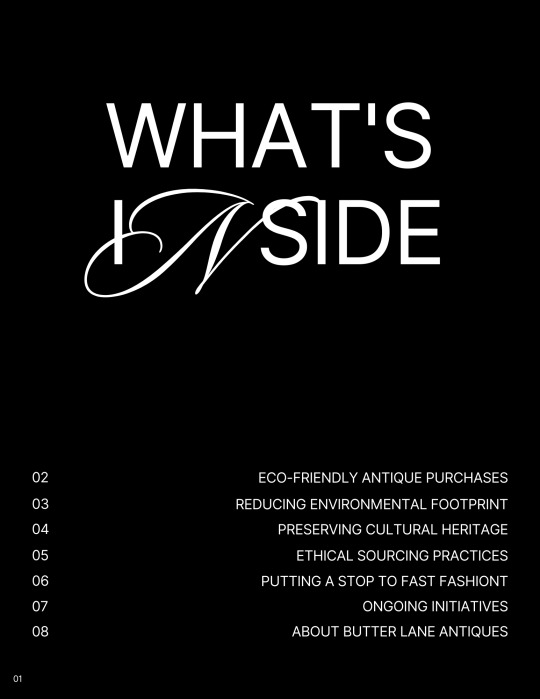
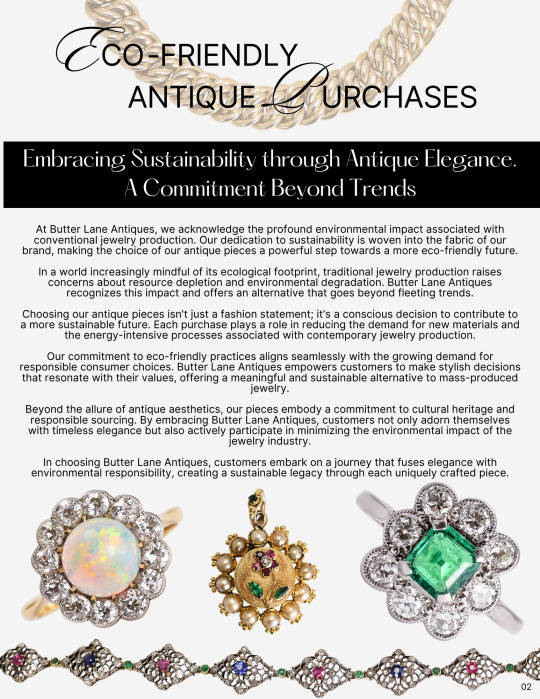


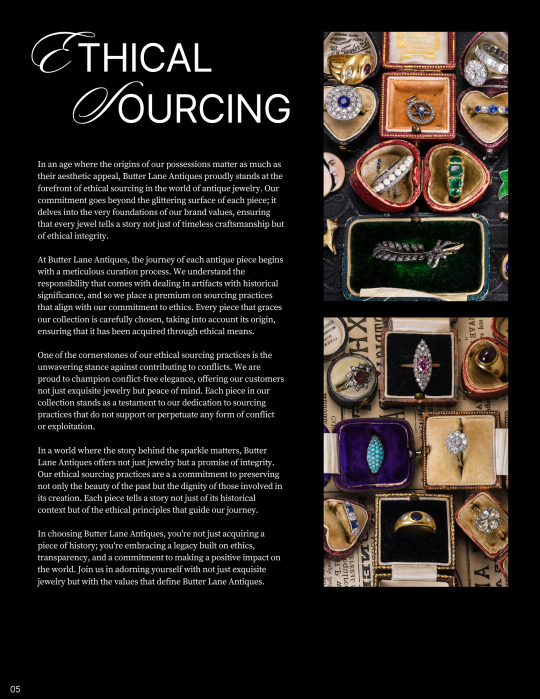
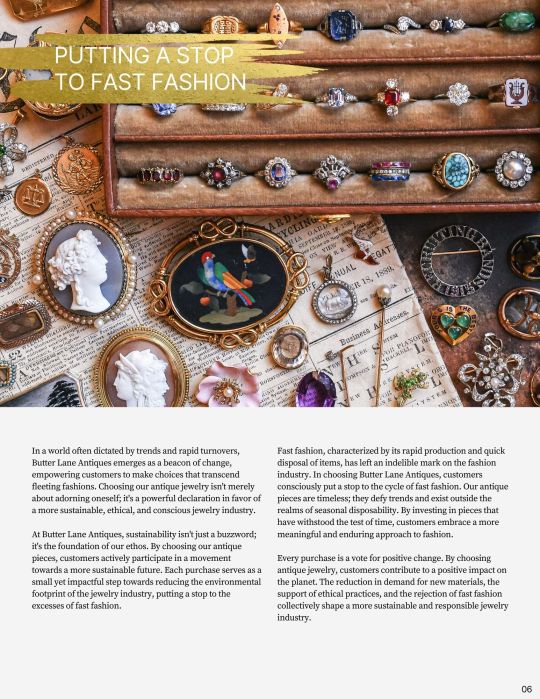



Adorning With Purpose - A Guide to Sustainable Jewellery
#SustainableJewelry#EthicalFashion#SlowFashion#GreenLiving#EcoFriendlyJewelry#EthicalSourcing#ArtisanCraftsmanship#RecycledMaterials#ConsciousConsumption#JewelryForChange#SustainableStyle#GreenFashion#EcoLuxury#ResponsibleProduction#ReduceReuseRecycle#EnvironmentalAwareness#EthicalDesign#JewelryWithPurpose#SustainableLiving#FashionRevolution#FairTradeJewelry
3 notes
·
View notes
Link
𝐑𝐞𝐯𝐨𝐥𝐮𝐭𝐢𝐨𝐧𝐢𝐳𝐢𝐧𝐠 𝐅𝐚𝐬𝐡𝐢𝐨𝐧 𝐃𝐞𝐬𝐢𝐠𝐧: 𝐓𝐡𝐞 𝐈𝐦𝐩𝐚𝐜𝐭 𝐨𝐟 𝐀𝐫𝐭𝐢𝐟𝐢𝐜𝐢𝐚𝐥 𝐈𝐧𝐭𝐞𝐥𝐥𝐢𝐠𝐞𝐧𝐜𝐞
Artificial intelligence is transforming the fashion industry in unprecedented ways. From trend prediction to personalized designs, AI is playing a crucial role in revolutionizing fashion designing. Discover the latest AI innovations and how they are reshaping the fashion industry in this insightful article.
https://wifd.in/role_of_artificial_intelligence_in_fashion_designing
#aiinfashion#fashiondesign#artificialintelligence#fashiontechnology#innovation#fashionrevolution#fashion technology#futureoffashion
2 notes
·
View notes
Photo






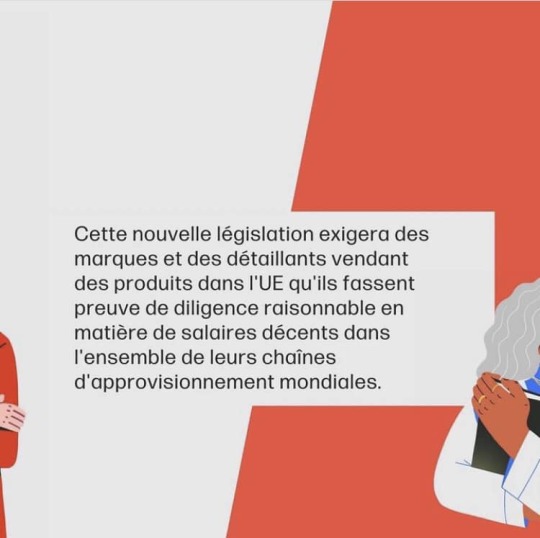


Good Clothes, Fair Pay est une campagne exigeant une législation sur le salaire décent dans le secteur de l’habillement, du textile et de la chaussure.
Nous avons besoin d’un million de signatures de citoyens de l’UE pour faire pression en faveur d’une législation obligeant les entreprises à faire preuve de diligence raisonnable en matière de salaire vital dans leurs chaînes d’approvisionnement.
Il faut atteindre les 1 million de signatures dans les 3 mois (avant juillet 2023).
Svp, pouvez-vous signer et partager sur vos réseaux.
🙏🏻🙏🏻🙏🏻🙏🏻🙏🏻🙏🏻🙏🏻🙏🏻🙏🏻
#fashionrevolution#fashionrevolutionfrance#modeethique goodclothesfairpay fashionrevolutionweek fashion
6 notes
·
View notes
Text
Monday's Photography Inspiration - Frank Horvat
Photography is the art of not pushing the button”
– Frank Horvat
Frank Horvat is a renowned photographer whose career spans several decades and is marked by a diverse and influential body of work. Born in Abbazia in April 28, 1928, (now Opatija, Croatia), Horvat later moved to Switzerland and then to Milan, Italy, where he began his career as a professional photographer in the early…

View On WordPress
#CandidMoments#CaptureTheMoment#ColourInFashion#DocumentaryPhotography#FashionIcon#FashionInnovation#FashionPhotography#FashionRevolution#FrankHorvat#HumanCondition#PhotographyArt#PhotographyExperiment#PhotographyInfluence#PhotographyLegacy#PhotographyMaster#PhotographyPioneer#SocialIssues#StreetPhotography#VisualStorytelling
10 notes
·
View notes
Text

27th December 2023
dress, hat
17-24C, sunny
#ootd#sewing#imakemyownclothes#maker#makersmovement#sewing revolution#fashionrevolution#ootn#sewsolidarity#makersofinstagram
13 notes
·
View notes
Photo

Thank you @fiberartnow for putting my grass root dress on the cover. 🥳 blown away 🌱 #grownfromseed #sustainablefashion #consciousfashion #fashionrevolution #futureoffashion #slowfashion #slowfashionmovement #responsiblefashion #fashionrev #greenfashion #passioncouture #wearables #whomademyclothes #biodesign #biotechnology (at Hampton Hill, London, United Kingdom) https://www.instagram.com/p/CjYVQw-oDVR/?igshid=NGJjMDIxMWI=
#grownfromseed#sustainablefashion#consciousfashion#fashionrevolution#futureoffashion#slowfashion#slowfashionmovement#responsiblefashion#fashionrev#greenfashion#passioncouture#wearables#whomademyclothes#biodesign#biotechnology
10 notes
·
View notes
Photo
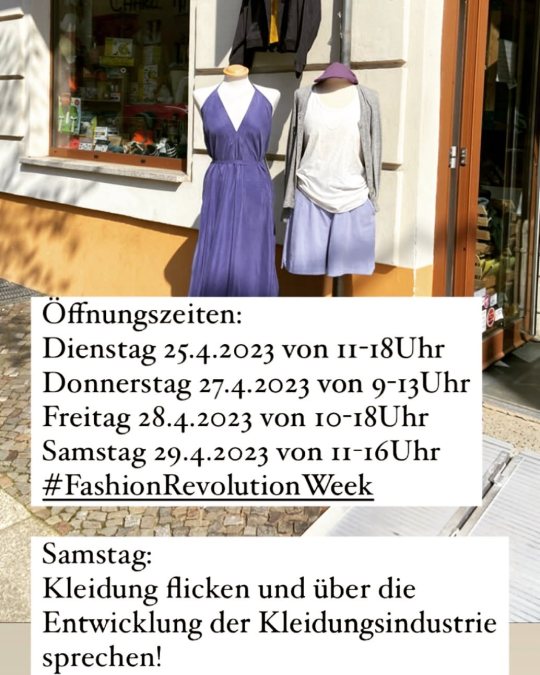
Vor 10 Jahren: Am 24.4.2013 stürzte das Rana Plaza, eine Fabrik in Bangladesh, ein. Hier wurde Kleidung für verschiedene große und bekannte Kleidungsfirmen produziert. Viele Menschen starben. Viele leiden noch heute unter den Folgen. Veränderungen in der Kleidungsindustrie finden sehr langsam statt. Immer wieder passieren Unfälle in Fabriken in denen Kleidung u.a. für Deutschland hergestellt wird. Informiert euch über die Herkunft eurer Kleidung! #WhoMadeMyClothes Fragt bei den Herstellungsfirmen nach. #FashionRevolution Zur #FashionRevolutionWeek treffen wir uns am Samstag, 29.4.2023, zum Kleidung flicken. Wir nähen und stopfen gemeinsam unsere Kleidungsstücke und verlängern deren Lebenszeit. Wir freuen uns auf euch! Der Laden ist parallel geöffnet. Liebe Grüße, Mareike und Team Die Öffnungszeiten auf einen Blick: Dienstag 25.4. von 10-18Uhr Donnerstag 27.4. von 9-13Uhr Freitag 28.4. von 10-18Uhr Samstag 29.4. von 11-16Uhr mit gemeinsamen Kleidungsstopfen. #FairFashion #GrüneKleidung #Lichtenberg #ökologischeKleidung #Alfredstraße4 #HopplaCharlotte #GreenFashion #Öffnungszeiten #DIY #Reparieren #Handarbeit #Workshop #GemeinsamFlicken #KleidungFlicken #RanaPlazaNeverAgain #AltLichtenberg #WhoMadeYourClothes #FaireKleidung (hier: Hoppla Charlotte) https://www.instagram.com/p/Crdc6Pzs6N7/?igshid=NGJjMDIxMWI=
#whomademyclothes#fashionrevolution#fashionrevolutionweek#fairfashion#grünekleidung#lichtenberg#ökologischekleidung#alfredstraße4#hopplacharlotte#greenfashion#öffnungszeiten#diy#reparieren#handarbeit#workshop#gemeinsamflicken#kleidungflicken#ranaplazaneveragain#altlichtenberg#whomadeyourclothes#fairekleidung
4 notes
·
View notes
Text
Sustainable Fashion Revolution: The Ultimate Guide to Dress Responsibly and Look Fabulous in 2023

Introduction
Sustainable fashion has gained significant attention in recent years, as consumers and brands alike are becoming more aware of the negative impact of the fashion industry on the environment and society. Sustainable fashion refers to the production, use, and disposal of clothing items in an environmentally responsible and socially conscious manner. Here are some key takeaways from the provided web search results regarding sustainable fashion and how it can help us dress responsibly in 2023:
- Sustainable fashion is an emerging trend in the fashion industry, but progress remains slow .
- Creating a greener wardrobe is a simple step towards sustainability. It involves taking stock of your existing wardrobe, choosing sustainable fabrics, and supporting sustainable brands .
- Sustainable fashion brands use natural or recycled fabrics that require less or no chemical treatment, less water, and less energy. Some of the most sustainable fabrics include linen, hemp, organic cotton, and Tencel .
- There are several sustainable fashion brands that offer stylish and environmentally friendly clothing options. These brands source upcycled fabrics and eco-minded materials for their clothing, and prioritize ethically sourced and sustainable materials and working conditions. Some of the top sustainable fashion brands include Christy Dawn, Reformation, Cuyana, Amour Vert, Whimsy + Row, and Mara Hoffman .
- Sustainable fashion is a key step towards dismantling the fast fashion industry, which is responsible for more greenhouse gas emissions than the shipping and aviation industries combined .
- Sustainable fashion is also gaining traction among consumers. A 2020 report on sustainability in fashion found that 67% of shoppers now consider environmentally friendly fabrics when choosing a brand .
- The fashion industry is taking steps towards sustainability, such as Copenhagen Fashion Week's sustainability requirements for participating designers, with the goal of setting a new industry standard .
In conclusion, sustainable fashion is a key aspect of dressing responsibly in 2023. By choosing sustainable fabrics, supporting sustainable brands, and taking steps towards a greener wardrobe, we can contribute to a more environmentally friendly and socially conscious fashion industry.
Sustainable Materials for Fashion

Sustainable fashion has gained increasing attention in recent years due to the negative environmental impact of the fashion industry. Several sustainable materials can be used in a fashion that minimizes waste, reduces carbon emissions, and conserves natural resources. Some of the most commonly used sustainable materials in fashion include organic cotton, recycled cotton, hemp, linen, bamboo, cork, ECONYL® recycled polyester, Lyocell, Modal, ECOVERO™, Piñatex, and Bananatex® .
The fashion industry's conventional raw materials sourcing has contributed significantly to the planet's declining health, including petroleum refining for polyester, water contamination and depletion, soil degradation, and deforestation for industrial cotton and viscose production. Consequently, the industry is turning to sustainable materials that prioritize the environment and promote ethical practices in production.
Polyester, which accounts for approximately 65% of all clothing, is produced from fossil fuels and consumes 70 million barrels of oil annually, causing significant pollution to the environment. Similarly, the fashion industry uses considerable amounts of fossil fuel-based plastic for packaging and hangers. Less than one per cent of clothing is recycled to make new clothes, which contributes to significant waste generation in the industry .
Wool is another sustainable fabric that can be produced sustainably, depending on how it's made. Climate Beneficial™ Wool produced on carbon farming landscapes captures carbon and puts it back into the soil. Wool is also compostable, insulating, and does not shed plastic microfibers .
Several sustainable materials are emerging, and luxury brands are turning to them to respond to customer demand for greener textiles. Examples include mushroom leather and pineapple fabric, which are gaining popularity and could play a significant role in sustainable fashion in the future .
Several sustainable fashion brands prioritize using sustainable materials in their production, including Outerknown, which sources 90% of its fibres from sustainable materials such as recycled mango fruit, organic cotton, recycled Polyurethane (PU) leftovers, and environmentally-certified leather. Similarly, Reformation, based in Los Angeles, uses upcycled sneakers made of sustainable materials such as recycled mango fruit, organic cotton, recycled Polyurethane (PU) leftovers, and environmentally-certified leather. .
Other sustainable materials include linen and hemp, which were commonly used in clothing in the past. Hemp is three times stronger than cotton, UV-resistant, durable, breathable, and can be grown without fertilizer or pesticides. It also requires less water to grow compared to cotton . Recycled plastic bottles are also a sustainable material used in fashion production, and they are being adopted by many designers due to their eco-friendliness .
In conclusion, several sustainable materials are available for use in fashion production, ranging from organic and recycled cotton, hemp, linen, and bamboo to mushroom leather and pineapple fabric. Sustainable fashion brands prioritize
The Rise of Recycled Materials in Sustainable Fashion
Sustainable fashion has become a growing trend in the fashion industry, and the use of recycled materials is one of the ways that fashion brands are becoming more eco-friendly. Recycled materials, such as organic cotton, hemp, and linen, are being used in fashion lines to reduce waste and carbon emissions. Some fashion brands are even implementing compostable packaging and branding to further reduce their environmental footprint .
The use of recycled materials in sustainable fashion is not only beneficial to the environment but it can also be implemented through fair labour practices, such as the Maasai beadwork. Additionally, upcycling, a process that transforms waste and byproducts of manufacturing into new products, has gained popularity in the fashion industry. Designers like Ancuta Sarcas have even started upcycling discarded Nike shoes and high-waste materials like mesh to create unique fashion pieces .
The COVID-19 pandemic has further accelerated the demand for eco-friendly fashion. Fashion brands, manufacturers, and traders are looking at more sustainable approaches to meet the market demand for products meeting environmental, social, and governance (ESG) criteria. Carbon emissions reduction is also one of the targets of global efforts to promote sustainable economic development .
Overall, recycled materials are becoming increasingly prevalent in a sustainable fashion as designers and brands look for ways to reduce waste and carbon emissions while still producing stylish and unique fashion pieces.
Organic Cotton: The Benefits for the Environment and Your Wardrobe
Organic cotton is cotton grown without the use of synthetic chemicals such as fertilizers, pesticides, or genetically modified organisms (GMOs). It offers various benefits to the environment and to the people wearing the clothes made from it.
One of the most significant benefits of organic cotton is that it requires much less water to grow compared to conventional cotton. The farming process used in organic cotton production relies on rainwater for about 80% of its needs, resulting in approximately 71% less water used overall . Additionally, organic cotton cultivation methods avoid the use of synthetic fertilizers, which can lead to soil degradation and pollution of water sources, ultimately helping to prevent water contamination .
Furthermore, organic cotton production methods play a role in mitigating climate change by avoiding the use of synthetic chemicals, reducing energy consumption, and sequestering carbon more efficiently in healthier soils . As such, it has been established that organic cotton cultivation has significant environmental benefits, such as promoting biodiversity, reducing greenhouse gas emissions, and helping to prevent soil erosion and degradation .
Aside from its environmental benefits, organic cotton is also better for the farmers who grow it. They are not exposed to harmful chemicals that can cause a range of health problems, including respiratory issues and cancer . Moreover, organic cotton is also softer and less likely to cause irritation than conventional cotton, making it a better choice for those with sensitive skin .
In summary, the benefits of organic cotton are numerous, and it is an excellent choice for those looking to reduce their impact on the environment while also supporting the health and well-being of farmers and consumers.
The Future of Sustainable Textiles: Innovations and Breakthroughs
Sustainable textiles are becoming increasingly important in the fashion industry. Several recent developments suggest that innovative and groundbreaking new textiles are on the horizon. Researchers at MIT are exploring the intersection of textile research and sustainable materials, seeking potential synergies that could advance the field . McKinsey and Company predict that there will be significant growth in sustainable fashion consumption, particularly in products made from more sustainable materials such as organic cotton . Science Daily reports on new textiles that can change shape when heated, potentially offering designers a wide range of new options for responsive and adjustable aesthetics . Drapers Online covers a variety of textile innovations, offering insights into the latest developments in the industry . Finally, the European Commission has launched a roadmap for the future of sustainable textiles in the EU, outlining efforts to increase the circularity of the fashion ecosystem . With these developments and more, it seems clear that sustainable textiles are an area of rapid innovation and growth, and we can expect exciting breakthroughs in the near future.
The Circular Fashion Movement

The Circular Fashion Movement is a growing global trend in the fashion industry that aims to promote sustainable and responsible production and consumption of clothing while reducing the negative impact of the fast fashion industry on the environment and society. Circular fashion involves designing, producing, and using clothes that are meant to be used and circulated responsibly and effectively for as long as possible, and then safely decomposed or repurposed when they are no longer of use to humans .
The movement has gained significant momentum in recent years, with numerous fashion brands and organizations committing to circularity commitments and initiatives, such as take-back and resale programs, upcycling, and closed-loop production systems . The Circular Fashion Pledge is a simple concept that asks fashion brands to pledge to one or more circularity commitments by the end of the calendar year, such as enabling take-back or resale programs .
Circular fashion has been identified as a key solution to the environmental and social challenges posed by the fast fashion industry, including waste, pollution, exploitation of labour, and depletion of resources . The movement has also gained significant attention and support from sustainability experts and advocates, who believe that it can help to create a more equitable, resilient, and sustainable fashion industry that benefits both people and the planet.
Overall, the Circular Fashion Movement represents a growing global trend towards more sustainable and responsible fashion production and consumption and has the potential to revolutionize the way we approach clothing and fashion in the future.
Understanding Circular Fashion: What It Is and Why It Matters
Circular fashion is a concept that has emerged from the intersection of the circular economy and sustainable and ethical fashion . Essentially, it refers to a system in which all garments can be reused, recycled, or returned to the earth (by virtue of being biodegradable or compostable), reducing the hugely damaging impact the fashion industry has on the planet . In other words, products are designed and developed with the next use in mind, with the aim of keeping resources in use for as long as possible and minimizing waste .
The fashion industry has long been known for its negative impact on the environment, including the strain on natural resources, the vast amount of CO2 emissions it produces, and the giant heaps of clothing that end up in landfills . Circular fashion is one solution to this problem, as it aims to reduce the harmful impact of fast fashion by circulating and reusing articles for as long as possible before decomposing them safely .
Circular fashion also means using sustainable and natural materials in production, such as organic cotton, bamboo, and Tencel, and avoiding synthetic and plastic fabrics like polyester and nylon derived from fossil fuels . Additionally, the production and transport of items should be powered by renewable energy sources .
In summary, circular fashion is a sustainable and ethical approach to fashion that aims to reduce waste and minimize the harmful impact of the industry on the environment. It involves reusing, recycling, and upcycling as much as possible, using sustainable and natural materials, and powering production and transport with renewable energy sources .
From Cradle to Cradle: The Principles of Circular Fashion Design
Circular fashion design principles are heavily influenced by the cradle-to-cradle (C2C) approach, which is a design framework for creating products that mimic natural systems and support the circular economy. The C2C approach promotes the high-quality use and circulation of biological and technical nutrients, protecting and enriching ecosystems while enabling economic productivity . The aim of the C2C approach is to optimize products from the molecular to modular level and establish these principles in all industry sectors, including the textile industry, consumables, buildings, automotive, packaging, and cosmetics .
Circular fashion design principles follow the four principles of the circular economy: preservation of natural capital, optimization of available resources, risk reduction, and renewable flow of resources and products . The principles of circular fashion design also emphasize the importance of planning the entire lifecycle of a product at the design stage, incorporating aspects such as sustainable materials, biodegradability, recyclability, and durability. Circular fashion aims to eliminate waste, pollution and the negative environmental impact of the fashion industry, by designing products for reuse, recycling, and composting .
Closing the Loop: How Brands are Embracing Circular Fashion
Circular fashion refers to a closed-loop system that rethinks and redesigns the way products are made, used, and discarded to reduce waste and promote sustainability. Many fashion and luxury companies, including LVMH, Kering, H&M, VF Corp, and Gap, have embraced circularity as a way to reduce their environmental footprint . A fully closed-loop apparel recycling system in California could achieve a total holistic impact of $11 billion to $13 billion a year, based on the estimate of the total holistic impact of approximately $5.5 billion to $6.5 billion from closed-loop recycling of polyester, which represents a significant portion of textile production . In order to combat unethical practices in the fashion and textile industry, the industry must embrace a closed-loop system, rethinking and redesigning the way products are made, used, and discarded . Many fashion brands are now working towards closing the loop on waste and promoting circular design, such as Loop Swim, a brand that transforms post-consumer plastic bottles into sun-protective swimwear . In February 2022, Reformation launched RefRecycling, a program that allows customers to return any well-worn Ref goods to the company to be recycled, thus promoting circular fashion and reducing waste .
Ethical and Slow Fashion
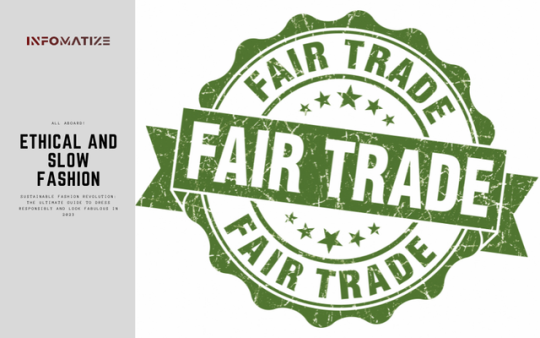
Ethical and slow fashion are two related concepts that are gaining more attention in the fashion industry. While they share some similarities, they also have distinct differences.
Ethical fashion focuses on ensuring fair treatment of workers throughout the supply chain, from safe working conditions to fair wages and eliminating child and slave labour . It also considers the treatment of animals, making sure that the materials used in clothing production are cruelty-free . On the other hand, slow fashion is about producing high-quality, timeless clothing that is sustainable and environmentally friendly . Slow fashion leans into sustainable practices, such as using eco-friendly materials and minimizing waste .
Both ethical and slow fashion is countercultural, going against the current societal norms that prioritize fast and cheap production over ethical and sustainable practices. Hallmarks of slow fashion include longer production timetables, fewer items produced, and more ethical labour practices, with an emphasis on creating timeless pieces that will stand the test of time .
In summary, ethical fashion is focused on the fair treatment of workers and animals throughout the supply chain, while slow fashion is about sustainable and timeless clothing production. Both concepts are aimed at creating a more sustainable and ethical fashion industry, challenging the norm of fast and cheap fashion production.
Slow Fashion: The Antidote to Fast Fashion
Slow Fashion is an approach to clothing production that takes into account all aspects of the supply chain, including the environmental and social impact, as well as animal welfare. It aims to create sustainable, ethical, and high-quality garments, produced on a smaller scale with more eco-conscious materials and locally manufactured to reduce transportation and promote fair wages for workers . In contrast to fast fashion, where clothing is produced quickly and cheaply with a focus on trends and low prices, slow fashion considers the long-term impact of the production process and encourages consumers to value quality over quantity .
If you're interested in adopting slow fashion practices, here are a few tips to get started:
- Have a clear-out of your closet and donate or sell the clothes you don't wear anymore to avoid cluttering and promote the use of existing garments .
- Buy clothes made from sustainable and eco-friendly materials such as organic cotton, recycled fabrics, or biodegradable fibres .
- Choose locally-produced garments to support your community and reduce the environmental impact of transportation .
Read the full article
#Consciousfashion#Eco-consciousfashion#Eco-friendlyclothing#Eco-friendlyfashion#Ethicalclothing#Ethicalfashion#Fashionrevolution#Responsiblefashion#Slowfashion#Sustainableclothingbrands#Sustainablefashion#Sustainablefashionbloggers#Sustainablefashionbrands#Sustainablefashionforallages#Sustainablefashionforallbeliefs#Sustainablefashionforallbodytypes#Sustainablefashionforallbudgets#Sustainablefashionforallcelebrations#Sustainablefashionforallclimates#Sustainablefashionforallcultures#Sustainablefashionforallethnicities#Sustainablefashionforallevents#Sustainablefashionforallgenders#Sustainablefashionforallhobbies#Sustainablefashionforallholidays#Sustainablefashionforallinterests#Sustainablefashionforalllifestyles#Sustainablefashionforalllocations#Sustainablefashionforallnationalities#Sustainablefashionforalloccasions
2 notes
·
View notes
Text
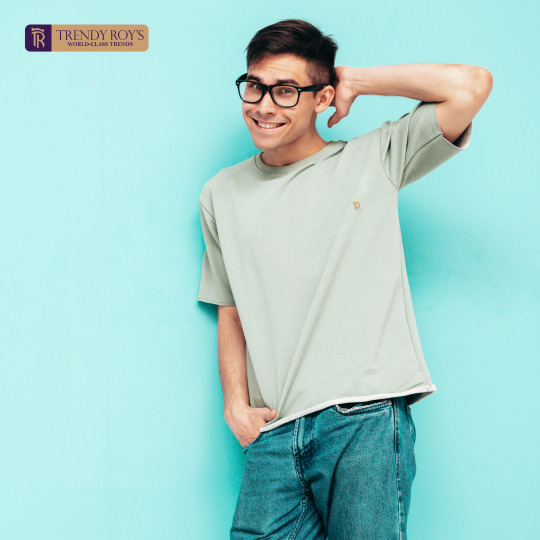
"For men who know that style is not just a choice, it's a way of life - Trendy Roy's is your ultimate fashion destination." #Trendyroys
"From runway to streetwear - Trendy Roy's has you covered with world-class men's fashion."
👉 If you have any queries, feel free to contact us now 📲 📲 : +91 974 5671 001
👉 For more details, check the website link🔗: https://www.emaraj.com/lifestyle/
#TrendyRoys#MensFashion#WorldClassTrends#Trendy#StylishWear#ElevateYourWardrobe#FashionRevolution#MensStyle#FashionForward#ContemporaryFashion#ClassicStyle#MensWear#StandOut#DressToImpress#FashionStatement#MensClothing#HighEndFashion#StreetStyle#FashionArt#GoodManners#Emaraj#EmarajGroupInternational
2 notes
·
View notes
Text
Fashion week
Il serait malhonnête de nier l’émerveillement ressenti à chaque Fashion Week, avec la découverte des dernières créations des plus grands couturiers, comme celles des jeunes designers prometteurs.
Devant nous défilent les témoignages d’un univers, d’un patrimoine, d’un idéal, d’une vision d’un créateur qui s’octroie la liberté, à travers l’art du vêtement, de nous raconter le monde et de nous transporter dans l’antre de son imaginaire. Fruit de multiples talents, de toutes ces petites mains ayant œuvré, pendant des heures infinies, dans l’ombre de l’artiste, maniant fils, aiguilles et machines telles de vraies magiciennes, pour nous offrir la joie d’admirer ce spectacle fabuleux d’étoffes, plus surprenantes les unes que les autres.
Elle nous ensorcelle, la mode et ses délices qu’elle présente amadouement à nos yeux. Elle est si belle, c’est un rêve éveillé que l’on vit…
Mais derrière tant de splendeur, se cachent aussi bien des travers que nos engagements ne nous permettent pas de laisser de côté.
La mode est polluante, cela n’est pas une nouveauté, mais quand arrivent les Fashion Weeks, cet aspect devient d’autant plus critiquable.
Quel est le coût environnemental de tous ces déplacements, incluant aussi bien les êtres humains que le matériel, pour quelques heures de spectacles ? D’une ville à l’autre, combien d’heures d’avion viennent s’amonceler dans l’empreinte carbone mondiale ? Et qu’en est-il de la question des logements, de la création des décors, rarement recyclés une fois le show terminé, de l’électricité, de l’énergie que tout cela représente ? Sans oublier la production des vêtements qui est à elle seule extrêmement polluante…
Selon The Carbon Trust, chaque année les Fashion Weeks représentent 241 000 tonnes de CO2. En d’autres mots, cela représente l'éclairage de Time Square pendant 58 ans. Affolant n’est-ce pas ? La connaissance de ces chiffres nous amène fortement à nous questionner sur notre rapport à ces évènements et à leur légitimité actuelle, alors que le monde est en train de traverser une dangereuse crise climatique.
Une nécessité s’impose à reconsidérer l’organisation et la mise en place des Fashions Weeks sous un prisme écologique. La crise sanitaire de 2020 nous a déjà apporté des pistes de réflexion en proposant des défilés digitaux, limitant ainsi les déplacements et leur empreinte environnementale. Certains designers s’engagent aussi à ce que leurs créations soient conçues en majorité avec des matériaux responsables, comme Stella McCartney par exemple. D’autres, encore, ralentissent le rythme des défilés en réduisant le nombre de leurs collections annuelles. Toutes les bonnes idées sont bonnes à prendre.
De même qu'il serait tant que la diversification des corps soit davantage représentée sur les défilés et que la présence de mannequins racisé.e.s, transgenres, grande taille ou de plus de 50 ans ne soit plus une minorité ou, pire, une exception.
C’est l’ensemble des Fashion Weeks qui doit être repensé. Mais ces changements ne pourront rendre ces évènements que d’autant plus magiques. ✨

Illustration inspirée du défilé Alexis Mabille Haute Couture Printemps-Été 2023
2 notes
·
View notes
Quote
Nurse, who an understandable but erroneous belief that Delia, her baby, was still in the nursery, said it [her mother's black georgette frock] made her look much too old and wished to shorten it. Delia, very conscious when it came to a question of good clothes, of her nineteen years, was enchanted by her own imposing appearance and peacocked up and down in the front of the glass...."
The year was 1939, and the situation was one of finding correct mourning wear to make the death of a relative. In this case, a cranky aunt who liked to bossy people around. The dress was originally Delia’s mother, but was not too tight for her. Delia and Nurse did end up agreeing on the shortening.
Notice how Delia was eager, at 19, to have a dress of her mother’s which clearly made her feel more important while she was wearing it. While during both dress revolutions of the 20th century--the 1920s and the 1960s--everything that looked young was envied. But in between those decades, young women longed to look older, to look like their mothers, to look more imposing and serious, and to be thus taken seriously.
This is from The Brandons, a novel by Angela Thirkell who wrote novels from the 1930s through the 1950s. They can be found here at Virago Books in reprints: https://www.virago.co.uk/?s=thirkell
#angelathirkell#1930sfashions#dressingbyage#mourningwear#vintagefashion#vintagemourningdress#mourningdress#thebrandons#fashioninfiction#age#costumehistory#dresshistory#fashionhistory#fashionrevolution#hemlines#blackdress
5 notes
·
View notes